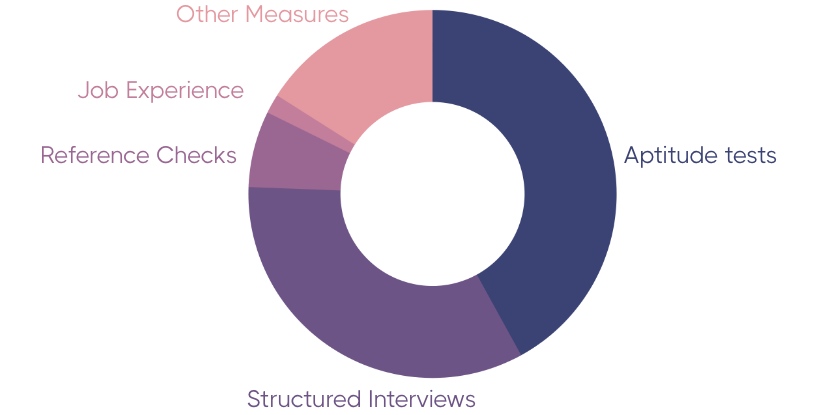What is the best way to recruit employees?
From our time working with business owners and leaders, we’ve found they all have a few things in common. One is that they are incredibly time-poor. Two is that they spend a lot of that valuable time on areas that aren’t their high-value activities.
They spend time on operational tasks like accounts payable, administration or reporting because they want to make sure that their business is moving in the right direction. It’s like a train driver leaving the wheel to check if the ticketing officer is charging passengers properly.
Some of the time it’s because managers are worried about things getting done correctly and don’t have strong processes in place to scale accurately. Other times it’s plainly because they haven’t hired the right people, into the right roles and they feel compelled to keep a close eye on their employees to avoid the train running off the track.
As you can probably tell, the impact that a poor recruit can have on small businesses, that already manage tight resources and marginal room for error, is massive. A poor performer can cost you money from your top line and then cost you precious time and energy managing them out of the business, not to mention the effort of re-hiring.
We see easily avoidable mistakes made every day so we’ve put together our five tips for small business owners to help them get their recruiting right, so they can focus on steering the business to the next station.
1. Hire for attitude over experience.
Employees with the right attitude, aptitude and behaviours will trump industry experience.
We’ve put this tip first because we’ve found it to be a failsafe method of hiring the right people long term. Unless it’s a role where detailed knowledge is key to success e.g. a surgeon or lawyer or a crucial leadership position where experience managing people is a factor e.g. a sales manager or CFO, then everything else can be taught.
If someone has the motivation, cognitive ability and drive…systems, products and procedures can be taught.
Don’t miss out on someone with a positive mindset, who’s switched on and is looking to invest their time and career in your business because there was someone who worked in the same field, brand or product.
We’re sure you’ll agree that it’s more efficient to spend energy training and coaching people motivated to learn on the right procedures and product, than trying to re-train people who know the product or process but don’t agree with the business’ selling style or target market because ‘that’s not how we did it in my last company’.
Getting rid of bad habits will cost you more time, money and resources in the long term, than training the right ones.
2. Read the person, not the resume
A candidate’s application gives you many clues into their disposition and behaviours that aren’t just about their career history.
This is their first impression for you. Have they ensured they’ve taken the opportunity to make it a positive one?
For example, have they demonstrated they’ve read the advertisement thoroughly and addressed your selection criteria? This shows they’re conscientious and communicate with their audience in mind.
If you’ve asked for a cover letter, have they included one? If they haven’t, they might not be too excited about the role or they have poor attention to detail. Do you want to employ someone with neither?
Have they included a career summary in their resume explaining their objective and path? Does their career path make sense? When someone job-hops from one role to another every 6 – 12 months, it doesn’t mean they’re not a good employee but it does beg the question why they haven’t stuck around…
Reading through their job titles and achievements, look at the language they use to describe what they do and what they’re proud of. You might understand a lot more about their personality and motivations than you’ve realised.
3. Create an engaging Employee Value Proposition
An Employee Value Proposition (EVP) is the sum of what a business can offer and provides to employees in return for joining, staying and doing their best for the company. The fight for great talent is only growing so small businesses need to be innovative and think hard about what they can offer candidates that larger corporates aren’t able to.
For example:
- Career development within the company
- 1:1 mentoring, training and development opportunities
- A friendly, positive culture and flexible working environment
Writing advertisements that specifically communicate what your business can offer employees means you’ll attract people who are interested in and value what your company provides.
Different offers attract different candidates. And vice versa, you spend less time on people who don’t value what you offer.
4. Use rigorous and objective assessment methods
So now you’ve sifted through a pile of applications and shortlisted candidates to interview. But how do you know you’re assessing the right things?
Using multiple objective assessment tools confirms not just what you suspected, but also sheds light on areas for development. No-one is perfect, but it’s about finding out from the start what you can work with, and what you can’t.
This goes back to hiring for attitude, not experience. You may assess a candidate and find out that their customer service skills are second to none, but they have trouble keeping track of their schedule.
Is this something you can manage and support to ensure your customers are looked after? If yes, then great. If not, well at least you know now and not 6 months into their employment.
On the other hand, you may be hiring a salesperson and find out a candidate’s natural energies and behaviours mean they’re more likely to be less confident in business situations and not enjoy negotiating or persuading. It’s probably not going to be a long term role for them if that’s the case.
You can read more about psychometric testing in our blog here.
5. Use an RPO and leave it to the professionals
If you want to get back to focusing on the bigger picture and steering the train, something to consider is outsourcing your hiring to the experts by using a Recruitment Process Outsourcing consultant (RPO).
RPOs function as your internal recruitment team. They know and understand your business, the industry and the kind of person that will fit your team and culture. They solely focus on finding and hiring employees for your role and company and have deep knowledge and understanding of the market, average salary and what will attract the right kind of person.
We know you’re busy. We understand you’ve probably hired poor performers in the past and don’t want to continue making that mistake. You don’t have time to review applications and the mental load of deciding who to interview isn’t something you need on your plate.
The great news is that there are people out there who love helping small-medium businesses grow their team, and who understand the importance of getting every recruit right from administration to operations. Do your homework and find someone that wants to understand you and your business.
In summary, we understand that one of the most crucial areas to get right in a business is its people. This has become even more prevalent during COVID restrictions and the challenges that a global pandemic has presented; when you’ve really needed to trust and lean on your team to pull through. In times of crisis and times of growth, having the right people on board your train can be the difference between running off the rails or continuing the journey.





